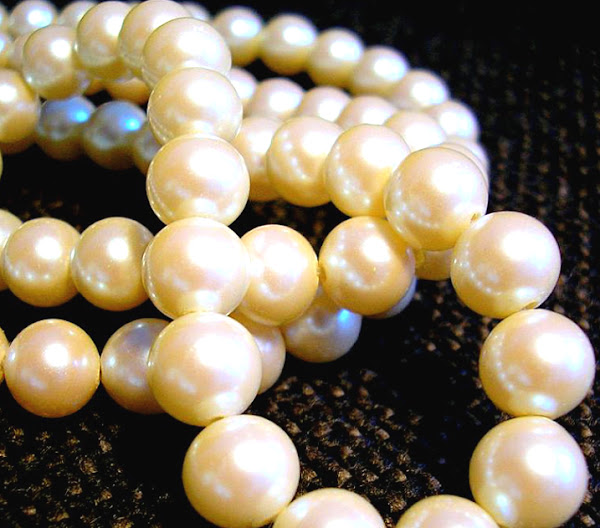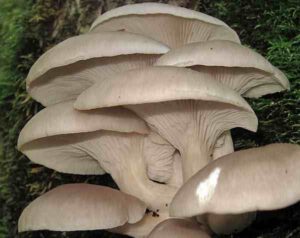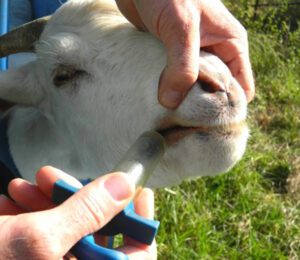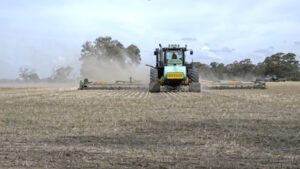Commercial pearl farming is one of the best and highly profitable aquaculture business. Because, pearls have very high demand and value in the international market.
You have to culture the oysters for getting these highly valuable pearls. And the good news is that, you can do pearl farming along with other fish farming or aquaculture businesses.
You can obtain decent profits with commercial pearl farming projects under ideal aquaculture practices of mussels.
Initial or first year investment is relatively high in this business, because you need a fixed asset set up. But the profits are high and you will be able to make good profits from this business.
Many different pearl species used for pearl production. Lamellidens marginalis, Corrianus and Parreysia corrugata are some freshwater mussel species.
Today, the cultured pearls on the market can be divided into two different categories. The first category covers the beaded cultured pearls, including akoya, South Sea and Tahiti.
These pearls are gonad grown, and usually one pearl is grown at a time. This limits the number of pearls at a harvest period. The pearls are usually harvested after one year for akoya, 2–4 years for Tahitian and South Sea, and 2–7 years for freshwater.
The original Japanese cultured pearls, known as akoya pearls, are produced by a species of small pearl oyster, 0000Pinctada fucata martensii0000, which is no bigger than 6 to 8cm in size, hence akoya pearls larger than 10mm in diameter are extremely rare and highly priced. Today, a hybrid mollusk is used in both Japan and China in the production of akoya pearls.[1]
However, commercial pearl farming is a very good and profitable business and you can make good profits from this business. Here we are trying to describe more information about commercial pearl farming business.
Development of a Pearl
A pearl is formed when the mantle tissue is injured by a parasite, an attack or a fish, or another event that damages the external fragile rim of the shell of a mollusk shell bivalve or gastropod.
In response, the mantle tissue of the mollusk secretes nacre into the pearl sac, a cyst that forms during the healing process.
Chemically speaking, this is calcium carbonate and a fibrous protein called conchiolin. As the nacre builds up in layers of minute aragonite tablets, it fills the growing pearl sac and eventually forms a pearl.
Chemical Composition of Pearls
82% to 85% of aragonite calcium carbonate, 10% to 13% of the organic matrix and 2% to 5% of water.
Different Types of Pearls
There are actually 3 different types of pearls available. Here we are trying to shortly describe more about these types.
Natural Pearls
The shape of the natural pearls depends on the original shape of the foreign body.
Artificial Pearls
As the name suggests, the artificial pearls are artificially made and coated with a synthetic material.
Cultured Pearls
Cultured pearls are cultivated in freshwater ponds, rivers etc. You can get the desired shape in this type of pearls.
There are also some other types of pearls namely Keshi pearls, Saltwater cultured pearls, Mabe pearls and Japanese cultured pearls.
Early Considerations Before Starting Commercial Pearl Farming Business
There are some facts to consider before starting commercial pearl farming business.
- Commercial pearl farming business is a long-term project. So, you should dedicate time and hard work along with initial investment to set up this business.
- You need to have a secured and safe site or location for setting up a commercial pearl farming business. The selected site must have to be free from predators, floods and other threats.
- Ensure that you have a very good source of Oysters to culture in the pond.
- Try to complete a full training on pearl farming before starting commercially. You can also visit some existing farms within your area.
- Determine your marketing strategies first, before starting commercial pearl production.
- Make a very good and effective pearl farming business plan which includes all the financial aspects of the farm from buying mussels to marketing pearls.
Requirements for Running a Pearl Farming Business
You will need the following items in a freshwater pearl farming business. The required items are categorized in two groups which are fixed and variable items.

Fixed Items
First and most important item is a pond where you will stock the Mussel Oysters. You can either build a pond or go for rent.
You should have a shed or house for performing surgical activities.
You need to have culture units with supporting material bamboo sticks and PVC pipes for keeping the mussels.
You will need to have a worker room and some other items such as chairs and tables for performing any technical activities.
A surgical set is also an another essential item for performing surgical tasks. You can get these units from any pearl culture training centers.
Variable Items
High quality mussels are required for getting good quality pearls. You can buy the mussels from certified breeders or any department of fisheries.
You will need a pearl nucleus for the freshwater pearl farming process. You can purchase these from the market or any pearl culture centers.
Skilled farm workers are needed for obtaining good products.
The pond must be fertilized and limed for commercial pearl production. Both fertilizer and lime will make the pond favorable for pearl production.
Required Toolkit
- Nucleus carrier
- Graft carrier
- Forceps
- Cell inserter
- Graft cutter
- Shell opener
- Mussel holder
- Incision knife
- Spatula
- Operation scalpel
How to Do Pearl Farming
First of all, you have to collect oysters from ponds, rivers or other sources, or you can purchase from existing farmers.
After having oysters, after every minor operation in each oyster, simple or designed beads with a diameter of 4-6mm are put inside it. Then the oyster is closed and kept in nylon bags for 10 days on anti-biotic and natural feed. These are monitored regularly and dead oysters are removed.
The most favorable season for pearl farming is the time of autumn (October to December). Beads can be cultivated in a pond of at least 10 x 10 feet or larger.
Stock in the Pond
After the initial 10 days, keep the oysters in the ponds. For this, the oysters are hung in nylon bags (with two oysters per bag density) using bamboo or a bottle and left at a depth of one meter in the pond.
You can stock 20k to 30k oyster per hectare. The material coming from inside starts to settle around the bead which takes the form of pearl in the end. After about 8-10 months, the oyster is ripped off and the pearl is removed.
Collect Pearl
You can collect the pearls from inside the oysters by opening it with a shell opener. After collecting the pearls, you can sell them immediately.
Nowadays, designer beads are being liked very much which get a good price in the market. You can also sell the oysters in the market after collecting the pearls.
Many decorative items are made of oysters. The work of extracting perfume oil from oysters in Kannauj is also done on a large scale.
Marketing
As we have mentioned previously, you have to determine a very good marketing strategy for selling your products. Otherwise your venture will not be profitable. So, determine your marketing strategies first before starting this business.
These are the steps for starting a commercial pearl farming business. Hope this guide has given you some basic information. Good luck & may God bless you!






